I helgen seglas den klassiska navigationstävlingen Augustimånen. Starten hålls vid ett skepparmöte på Bullandö marina i Stockholms skärgård på fredag kl. 18.00.
 Den som vill kan följa tävlingen direkt via hemsida.
Den som vill kan följa tävlingen direkt via hemsida.
Länk: http://augustimanen.se/
ITT Jabsco har utvecklat en ny energisnål eltoalett som är speciellt utformad för att ersätta en befintlig manuell toalett från Jabsco. Lite Flush eltoalett har samma sockeldimension, fästpunkter och slangfästen som den manuella toaletten, och monteringen blir därför snabb och enkel.
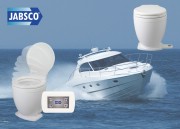 Lite Flush eltoalett är kompakt och lätt (11 kg, samma vikt som den manuella toaletten) med yttre hölje av plast, porslinsskål, sits med långsamt stängande lock. Den är försedd med en ny tystgående och effektiv spolpump med större dimensioner för att eliminera stopp i systemet. Den låga vattenförbrukningen (1,2 liter per spolning) minskar behovet av en stor avfallstank.
Lite Flush eltoalett är kompakt och lätt (11 kg, samma vikt som den manuella toaletten) med yttre hölje av plast, porslinsskål, sits med långsamt stängande lock. Den är försedd med en ny tystgående och effektiv spolpump med större dimensioner för att eliminera stopp i systemet. Den låga vattenförbrukningen (1,2 liter per spolning) minskar behovet av en stor avfallstank.
Lite Flush eltoalett kan erhållas med antingen fotkontakt (på vänster eller höger sida) eller en väggmonterad kontrollpanel, och i 12 eller 24 volt.
Länk: www.jabsconews.com
Fabio Buzzi, den italienska båtbyggaren vars senaste skapelse, FB RIB 39, får officiell premiär vid årets båtmässa i Cannes, Festival International de la Plaisance in Cannes, har bekräftat att han ställer upp i det klassiska racet Cowes Torquay Cowes.
– Det är en fantastisk RIB. Den har enastående manöverförmåga, den är snabb och redo för alla de besvärliga förhållanden som finns på Engelska kanalen, säger Fabio Buzzi, som är en världens mest respekterade båtkonstruktörer och fyrfaldig vinnare av Cowes Torquay.
Båten är konstruerad och byggd för den österrikiska racerbåtsmästaren och rekordhållaren Hannes Bohinc, som nyligen besökte Havens GP i Göteborg. Hans version heter “Hannes Bohinc’ Racing Rib 39”. Den båt som Buzzi ska använda är dock en lättare version, byggd i Kevlar och försedd med dubbla FPT N67 560 hk dieselmotorer med drev som som klarar effekter upp till 600 hk.
– Vi har testat båten på Comosjön, säger Buzzi. Prestanda är mycket imponerande. När jag började slå av på gasen vid 85 knop visste jag att det var dags att ta på hjälmen…
Motorpaketet är baserat på en av de mest beprövade kombinationerna inom powerboating, ZF Trimax Surface Drev. Kopplade till drevet är ett ZF 280-1 backslag och det allra senaste inom motorer från FPT. Båten har lättats cirka 500 kg och sänkt 200 mm.
Buzzis båt heter Wettpunkt.com och är på väg mot Isle of Wight, där Hannes Bohinc, Max Holzfeind och navigatören Ed Williams-Hawkes ställer upp tillsammans med 21 andra båtar i det 160 Nm långa racet.
Cowes Torquay Cowes startar kl. 10.00 från Cowes på lördag 29 augusti.
Länk: www.wettpunktracing.com
Ändring i Fiskeriverkets föreskrifter (FIFS 2004:25) om resurstillträde och kontroll på fiskets områdeHöjning av torskransonen för trålfiskande fartyg i ICES-delområde 22 – 24 i Östersjön.
Med hänsyn till rådande kvotsituation har Fiskeriverket beslutat att höja ransonen av torsk för trålfiskande fartyg i ICES-delområde 22 – 24 i Östersjön från och med den 31 augusti 2009.
Länk: www.fiskeriverket.se
Upphävande av förbud mot fiske efter äkta tunga i Skagerrak, Kattegatt och EG:s fiskevatten i Östersjön från och med den 31 augusti 2009Genom kvotbyte har kvoten på äkta tunga höjts och det finns möjlighet att åter öppna detta fiske. Fiskeriverket har därför beslutat att upphäva förbudet mot svenskt fiske av äkta tunga i Skagerrak, Kattegatt och EG:s fiskevatten i Östersjön från och med måndagen den 31 augusti 2009. Länk: www.fiskeriverket.se
Den 9 september 2009 inviger Kung Carl XVI Gustaf Kosterhavets nationalpark. Det är den 29:e i ordningen och den första marina nationalparken. Det blir ett gemensamt kungligt invigningsprogram med den norska nationalparken Ytre Hvaler på andra sidan gränsen.
Kosterhavets nationalpark ligger i Strömstads och Tanums kommuner på västkusten samt till invigningen av Ytre Hvaler i Norge.
Stockholm, Sverige, 20 augusti, 2009 – Helsingforskommissionen (HELCOM) har tilldelats 2009 års Swedish Baltic Sea Water Award. Priset annonserades av biståndsminister Gunilla Carlsson idag under Världsvattenveckans Östersjöseminarium i Stockholm.
HELCOM arbetar med att skydda Östersjöns marina miljö från föroreningar genom mellanstatligt samarbete mellan Danmark, Estland, EU, Finland, Tyskland, Lettland, Litauen, Polen, Ryssland och Sverige. HELCOM är verkställande organ för “konventionen om skydd av Östersjöområdets marina miljö”, även kallad Östersjökonventionen.
Swedish Baltic Sea Water Award uppmärksammar insatser som bidrar till att bekämpa miljöförstöringen i Östersjön och till att förbättra regionens ekologiska balans. Över 85 miljoner människor lever runt Östersjöns avrinningsområde. På grund av dess speciella geografiska, klimatmässiga och oceanografiska attribut är Östersjöområdet väldigt känsligt för miljökonsekvenser i hav och avrinningsområde till följd av mänsklig verksamhet. Östersjön lider för närvarande av kraftig övergödning orsakat av fosforutsläpp, vilket resulterar i omfattande algblomning. Regionen är även drabbad av överfiske, oljespill, avfall från kryssningsfartyg, syreutjämning på havsbottnen, m.m.
Juryn för Swedish Baltic Sea Water Award motiverade valet av årets vinnare på följande sätt: “HELCOM och dess sekretariat, under generalsekreteraren Anne Christine Brusendorffs ledning, har tagit det marina miljöskyddsarbetet till en ny nivå. Genom att ta fram handlingsplanen for Östersjön har HELCOM påvisat exemplariskt engagemang i miljöarbetet för Östersjöområdet. Handlingsplanen tar sig an de komplexa frågor som måste behandlas på innovativa sätt, förenar olika initiativ samt utgör en grundstomme för miljöarbetet i den kommande Östersjöstrategin.”
HELCOM ska motta Swedish Baltic Sea Water Award vid en ceremoni i Stockholm den 17 september i samband med en invigningsmiddag för en ministerkonferens om EU:s Östersjöstrategi. EU-minister Cecilia Malmström är middagens värdinna och priset kommer att presenteras av H.M. kung Carl XVI Gustaf.
Om Swedish Baltic Sea Water Award
Priset instiftades 1999 för att uppmärksamma direkta och praktiska insatser som bidrar till att förbättra Östersjöns vattenkvalitet. Det regionala priset delas ut årligen av Sveriges Utrikesdepartement under Världsvattenvecka i Stockholm till företag, organisationer, offentlig verksamhet eller privatpersoner som ett erkännande för deras insatser för Östersjöns vatten. Priset hyllar nytänkande inom det marina miljöskyddet i Östersjöområdet och består av 150 000 SEK. En jury tillsatt av den svenska regeringen utvärderar nomineringarna och utser vinnaren som kommer från något land i Östersjöregionen. Priset administreras av Stockholm International Water Institute (SIWI).
Genom att veta vad alger livnär sig på kan man motverka de negativa effekterna under vissa algblomningar. Andreas Brutemark har studerat de två mikroalgerna: Prymnesium parvum, vars gift dödar fisk och Dinophysis spp., som framkalla diarré och kräkningar hos människor som ätit förgiftade musslor.
Mikroalgerna, som studerats i Andreas Brutemarks avhandling, fungerar både som växt och djur. Som växter livnär de sig på oorganiska näringsämnen och solens energi och som djur livnär de sig genom att äta andra mikroalger och/eller djurplankton. Man skulle kunna jämföra dem med köttätande växter på land. Förmågan att kunna leva som växter och djur gör att dessa mikroalger är så framgångsrika och konkurrenskraftiga.
Andreas Brutemarks mål var dels att förstå hur mycket av dessa mikroalgers näringsintag som kommer från att fungera som växt eller som djur, och dels att förstå betydelsen av dessa processer för marina födokedjor. För att studera detta har han i sin forskning analyserat stabila kol- och kväveisotoper i algerna under olika förhållanden. Det finurliga är nämligen att kol och kväveisotoperna fungerar enligt principen “du blir vad du äter”, vilket gör att man kan se varifrån näring kommer. Som ett exempel använde Andreas Brutemark sig av en beräkningsmodell baserat på kol- och kväveisotoper av algerna och djurplankton för att visa att D. norvegica kan bidra med upp till 50 procent av dieten hos djurplankton.
Med större kunskaper om den här typen av mikroalger och deras roll i haven kan man i framtiden även arbeta för att motverka kraftiga blomningar av giftproducerande alger.
Andreas Brutemark kommer ursprungligen från Nykvarn och disputerade den 14 augusti. I sommar har han arbetat med projektet Fröken Alg vid Högskolan i Kalmar. För mer information går det bra att ringa Andreas Brutemark på mobilnummer 0704-655126.
Titel avhandling: Contribution of phagotrophy by microalgae to carbon flow in marine food webs.
Handledare: Professor Edna Granéli, Högskolan i Kalmar
Opponent: Professor Daniel Roelke, Department of Wildlife and Fisheries Sciences, Texas A&M University.
Genmodifierad, snabbväxande fisk kan revolutionera kommersiell fiskodling och avlasta överutnyttjade fiskbestånd. Men vad händer i naturen om de genmodifierade fiskarna rymmer? Forskare vid Göteborgs universitet har på uppdrag av EU studerat transgena fiskar och manar till försiktighet: – Genmodifierad fisk bör tillsvidare odlas i slutna system på land, säger Fredrik Sundström vid Zoologiska institutionen, Göteborgs universitet.

Transgena fiskar kan till exempel visa sig vara tåligare mot miljögifter, vilket skulle kunna ackumulera gifter som i slutledet hamnar hos oss konsumenter. Det finns också farhågor att de tillväxthormoner som tillsätts fisken kan överföras till människor. På uppdrag av EU har forskare vid Göteborgs universitet därför studerat miljöeffekterna av GMO (genetiskt modifierade organismer) inom fiskodling. Resultaten från studierna visar att den genmodifierade fisken bör behandlas med stor försiktighet
Fredrik Sundström, doktor vid Zoologiska institutionen, har studerat genmodifierad lax och regnbåge för att se vilka ekologiska risker de kan utgöra i naturen. Studien, där rymningar simulerats i laboratoriemiljö, visar att transgena fiskar påverkar den naturliga miljön betydligt mer än odlad vild fisk när den rymmer. Till exempel överlever genmodifierade fiskar bättre när det råder brist på föda, och gynnas mer än vildfisken av en ökande vattentemperatur.
– Det beror troligen på att den genmodifierade fisken har starkare konkurrensförmåga och är bättre på att konvertera föda, säger Fredrik Sundström.
Om genmodifierad fisk etablerade sig i naturliga bestånd skulle den kunna konkurrera ut den naturliga stammen. Men att utföra studier i laboratoriemiljö som efterliknar naturen är komplicerat, vilket gör det svårt att förutsäga hur förrymda transgena fiskar påverkar naturen. Fredrik Sundströms slutsats är att det krävs en internationell samsyn innan kommersiell odling kan tillåtas, och att en försiktighetsprincip måste tillämpas.
– Ett förslag är att odla den transgena fisken på land, vilket omöjliggör rymning. Åtminstone bör fertil fisk hållas i slutna system, säger Fredrik Sundström.
Inget land har ännu tillåtit kommersiell odling av transgen fisk, men flera ansökningar om sådan verksamhet behandlas av myndigheter i både USA och EU.
Bildtext: Fredrik Sundströms studier utfördes bland annat i en konstgjord bäck där mikrochip avläste fiskens rörelser. Foto: Lars-Erik Sundström.
FAKTA
Projektet Ekologisk riskbedömning av transgen lax inleddes i maj 2005 och avslutades i april 2009. Det har genomförts vid Centre for Aquaculture and Environmental Research i Vancouver, Kanada, på uppdrag av EU, Forskningsrådet Formas och Göteborgs universitet. Koordinator i Sverige är professor Jörgen Johnsson, Zoologiska institutionen.
FAKTA TRANSGEN FISK
Transgen fisk skapas genom att gener överförs till fisk från andra arter, bland annat människa. Den önskade genen förökas med hjälp av bakterier för att sedan isoleras, renas och införas i värdfiskens ägg genom mikroinjektion. Den överförda genen innehåller en DNA-sekvens som kodar för den önskade egenskapen. Hittills har forskare genmodifierat ett tjugotal fiskarter, bland annat karp, laxfisk och mal.
Trots att Havets Grand Prix i Göteborg redan har körts finns det fortfarande bra möjligheter att se tävlingarna på TV. Från och med idag 25 augusti blir det möjligt att också se internationella programmet med engelsk kommentar.
 Viasat Motors hade direktsändningar från Göteborg. Nu kommer dessa och vissa sammandrag som repriser från Havets Grand Prix i Norden.
Viasat Motors hade direktsändningar från Göteborg. Nu kommer dessa och vissa sammandrag som repriser från Havets Grand Prix i Norden.
www.captimax.com
Ännu en mycket välkänd och aktad amerkansk motorbåtstillverkare är på väg att gå över styr. Det är Fountain Powerboats i North Carolina som har ansökt om konkursskydd enligt chapter 11, på samma sätt som företag som GM och Genmar tidigare har gjort.
Det är den ansedda båtbranschtidningen IBI Magazines hemsida som uppger att Fountain Powerboats är konkursfärdigt. Helt överraskande är det kanske inte med tanke på att företaget bygger extremt snabba och bränsleslukande powerboats, något som knappast är särskilt gångbart med tanke på både miljö och ekonomi.
Fountain ska nu försöka sälja tillgångar som till exempel fabriker och verktyg. Även varumäket lär vara till salu, enligt IBI. Detta gäller även systerföretaget Baja Boats. Värdet av dessa uppskattas till mellan US$6m och US$8m.
Den största fordringsägaren är en bank, som har fordringar på närmare 150 Mkr på Fountain. Förra bokslutet redovisade företaget en förlust på 15 Mkr.
Fountain Powerboats startades och har drivits av Reggie Fountain, som fortfarande äger en stor del av aktierna. Under hans ledning har Fountain Powerboats haft en dominerande ställning bland tillverkarna av snabba och stora motorbåtar, främst på den amerikanska marknaden.
Fountain har vunnit fler nationella och internationella mästerskap än världens 100 övriga båttillverkare tillsammans, enligt Fountains egna uppgifter.
Idag förrättade statsrådet Åsa Torstensson namngivning av den sjöräddningsbåt som Sjöfartsverket anskaffat för att ställa till Sjöräddningssällskapets förfogande. Ceremonin ägde rum vid Sjöräddningssällskapets räddningsstation i Visby hamn. År 2007 fyllde Sjöräddningssällskapet 100 år och med anledning av det ville Sjöfartsverket bidra med en ny sjöräddningsbåt ur Sjöräddningssällskapets Victoriaklass.
Den nya sjöräddningsbåten ska vara stationerad i Visby som en förstärkning av möjligheterna för Sjöräddningssällskapet att undsätta nödställda kring Gotland och i Östersjön.
Sjöfartsverket är ansvarig myndighet för sjöräddningen i Sverige. Ansvaret omfattar efterforskning och räddning av människor i sjönöd, sjuktransporter från fartyg och förmedling av medicinsk rådgivning. Den svenska sjöräddningen bygger på en bred samverkan mellan flera myndigheter och organisationer, till exempel Sjöräddningssällskapet, Polisen, Kustbevakningen, Försvarsmakten, kommunal räddningstjänst samt Sjöfartsverkets alla båtar och fartyg.
Sjöräddningssällskapet, SSRS, är en frivilligorganisation som i ett avtal förbundit sig att utan kostnad ställa alla sina sjöräddningsresurser till Sjöfartsverkets förfogande. Sjöräddningssällskapet är helt beroende av gåvor, donationer och medlemsavgifter, då de inte begär några statliga medel.
Med närmare 2000 frivilliga sjöräddare vid 64 sjöräddningsstationer kring Sveriges kust och i de stora sjöarna, deltar Sjöräddningssällskapet i 70 procent av sjöräddningsinsatserna i Sverige.
Länk: www.ssrs.se
På onsdagen 25 augusti flygs Kustbevakningens två äldre flygplan av typen Casa till Uruguay. Piloter och operatörer från Uruguays militära flygskvadron har nu avslutat en veckolång kurs hos kustbevakningsflyget på Skavsta inför hemflygningen.
– Det är främst operatörerna som lärt sig övervakningssystemet. De har fått en snabbkurs som kommer att följas av ytterligare utbildning i Uruguay under hösten, säger chefsoperatör Björn Erlandsson vid Kustbevakningen.
Kontraktsskrivningen har föregåtts av ett halvårs intensiva förhandlingar.
– Det känns skönt att det är klart. Och roligt att det är just Uruguay som köpt planen eftersom de också ska använda dem till havsövervakning, säger kustbevakningsflygets kvalitetschef Per Lindelöw, som har arbetet intensivt med försäljningen under flera månader.
I Uruguay svarar landets försvarsmakt för all havsövervakning. Flygplanen kommer att baseras i Montevideo och användas för liknande arbetsuppgifter som i svenska Kustbevakningen.
– Det handlar om miljöövervakning, sjöräddning och fiskekontroll, berättar Lieutenant Colonel (överstelöjtnant ) Luis de Leon, som är ansvarig för hela operationen med att ta hem de nya flygplanen.
Själva typen är inte ny för dem; skvadronen har flera Casor av olika modell och KBV 587 har ju en gång i tiden flugits just i Uruguay.
– Det mest intressanta för oss med dessa plan är övervakningssystemet MSS från Rymdbolaget, vi har ingenting liknande, säger Luis de Leon.
På tisdagen lyfte f.d. KBV 583 och 587 från Skavsta för sista gången – uppfräschade inuti och med de svenska kustbevakningstecknen övermålade och med Uruguays registreringsbeteckning. På grund av deras begränsade räckvidd blir det många stopp längs vägen, bl.a. i Norge, Island, Grönland, Kanada och USA. Resan beräknas ta tolv effektiva flygdagar.
Därmed har en gammal trotjänare definitivt lämnat svenskt luftrum och samtidigt avslutat en epok i kustbevakningsflyget.
– Nu kan vi till hundra procent koncentrera oss på att utveckla de nya systemen säger Lars Franzén, chef för kustbevakningsflyget.
Länk: www.kustbevakningen.se
I Hyundai Cup tävlar alla på samma villkor och man använder sig av en så kallad jaktstart, där minsta båt får starta först. Hittills har hela 128 båtar anmälts till tävlingen. Och precis som i fjol så startar Hyundai-båten SWE 11000 sist av alla, flera timmar efter första båt.
Hyundai-båten är Sveriges största segelbåt, en Super Maxi 100, som mäter 100 fot (30,5 meter) i längd och 40 meter i masthöjd. Båten väger 32 ton har storseglets segelyta är 290 kvadratmeter (spinnakern 700 kvadratmeter). Hyundai-båten ska seglas av Bertil Söderberg som också är initiativtagaren till tävlingen Hyundai Cup.
I Hyundai Cup tävlar deltagarna om en bil, första pris är nämligen en ny, miljövänlig Hyundai i10. Första båt i mål beräknas till ca 16-tiden och på kvällningen vidtar prisutdelning.
Hyundai-båten deltar i tävlingen men kommer inte – oavsett resultat – att finnas på prispallen.
Länk: www.ksss.se
Kommentarer
Även jag har haft förmånen att få styra Hyundai ett par timmar en vacker vårdag på Ålands Hav. Det var en mycket intressant upplevelse.
Eckeröfärjan gick faktiskt långsammare
Missade texten på bommen i min kikare
new ideas new ?
FANTASTISK SEGELBÅT SNYGG SNABB – !!
Efter bland annat en artikel i Dagens Nyheter om bristande effektivitet och vidhäftningsproblem med bottenfärger har Ekomarin gått ut med en pressrelease om företagets bottenfärger. Där förklarar företaget att färgerna har “Vidhäftningsproblem under vissa förhållanden”.
Pressrelease:
Inför båtsäsongen 2009 lanserades en primer för att förbättra vidhäftningen av den giftfria båtbottenfärgen Neptune Formula.
I slutet av augusti har det visat sig att den nya primern i vissa fall inte har fungerat fullt ut. Vi vet att cirka fyra procent av våra kunder har drabbats av att bottenfärgen inte har haft tillräckligt bra vidhäftning. Detta beror på att primern, som innehåller en mjukgörande ingrediens, lett till att färgen, under vissa förhållanden, blivit mjuk och därför nötts ner allt för snabbt.
Vi tar alla rapporter på största allvar och välkomnar de som drabbats eller har frågor att kontakta oss på e-post eller på telefon. Självklart gäller nöjd kund-garantin för de som fått problem med färgen.
Samtidigt är det fantastiskt roligt att upptäcka att fler och fler har upptäckt fördelarna med Neptune Formula den här säsongen. Det innebär att mindre gifter sprider sig i Östersjön och visar att många båtägare vill hitta alternativ som inte skadar havet.
Neptune Formula-produkterna är biologiskt verksamma och därmed helt oskadliga för havsmiljön. Färgen innehåller proteiner som lockar bakterier som finns naturligt i vattnet att bilda en biofilm på båtbotten.
Biofilmen skapar ett tunt syrefritt skikt närmast skrovet, som avskräcker havstulpanernas larver från att fästa. Neptune Formula som lanserades i februari 2008 finns till försäljning hos svenska och finska återförsäljare.
Med vänlig hälsning
Claes Tarras Ericsson, VD, Ekomarine
Länk: www.neptuneformula.com
Tjockläppad Multe är en invandrad fiskart som i spåren av varmare hav bildar allt starkare bestånd längs svenska kuster. Ny rekordnotering för arten blev det när Markus Witte fångade en tjockläppad multe på hela 5,210 kg vid Björlanda utanför Göteborg. Fisken har nu godkänts som rekord av Sportfiskarna.
Den 8 augusti blev minnesvärd för Torslandabon Markus Witte. Markus siktade på att ta en havsöring vid småbåtshamnen i Björlanda Kile och svingade ut sitt 12 grams Tobydrag.
– En riktigt stor fisk följde efter och när jag gjorde vevstopp så högg den fast, berättar Markus.
Kampen blev lång och hård. Folk samlades på bryggor och i båtar och hejade på. Men Markus insåg snart att detta inte var en havsöring. Med bara händerna lyckades han lyfta upp fisken ur vattnet. Vad är det här? 80 cm lång. Någon åskådare trodde att det kunde vara en ovanligt stor multe.
– När jag kollat internet så fick jag bekräftat att det var en multe. Jag såg också att det svenska rekordet från 1996 var på 5,196 kg, säger Markus.
När Markus förstod att det kunde vara en rekordfisk han fångat fick han bråttom att föra fisken till en krönt butiksvåg. På en nattöppen mack i Göteborg kunde konstateras att vikten räckte precis till svenskt rekord: 5,210 kg. Efter granskning av alla uppgifter är fisken nu också godkänd som svenskt sportfiskerekord av Sportfiskarna.
Sportfiskarna, Sveriges Sportfiske- och Fiskevårdsförbund, driver sedan 1971 Storfiskregistreringen där man registrerar stora exemplar för alla tänkbara svenska fiskarter fångade på spö i hav eller sötvatten. Över 20 000 stora fiskar av över 70 olika arter finns registrerade! Hela rekordlistan finns på www.sportfiskarna.se.
Fakta tjockläppad multe (Chelon labrosus)
Tjockläppad multe är en till svenska Västkusten och Öresund invandrad fiskart. Genom den globala uppvärmningen av haven så sprider sig flera fiskarter norrut. Under de senaste 30 åren har multarna etablerat fina bestånd och går gärna och betar alger och snäckor på stenar och bryggstolpar ända inne i hamnarna. Men det är skygga och stridbara fiskar som inte låter sig fångas så lätt. Vanligaste fiskemetoden brukar vara mete med brödbitar. Men ibland tar de också ett spinnfiskat drag eller en fluga.
VM i laser startade i Halifax i går, torsdag. Från SWE Sailing Team deltar sju seglare. Av dem är Johan Wigforss den som med en 16:e-plats gjorde bäst ifrån sig på EM för knappt en månad sedan. – Johan har haft en lite besvärlig period men det känns som om det har vänt nu och jag hoppas att han nu kan börja närma sig världstoppen på allvar, säger förbundskapten Magnus Grävare.
Ett annat intressant namn är 21-årige Emil Cedergårdh, som det senaste året har gått framåt rejält.
– Han behöver bli jämnare i starterna men under EM lyckades han med stark segling ändå ta flera fina placeringar och han har alla möjligheter att göra en bra regatta, säger Grävare.
Torsdagens seglingar genomfördes i vindar runt 6-9 m/s. Bäst bland svenskarna klarade sig Johan Wigforss med en åtta och en sjua. Totalt ligger han på delad 16:e-plats. Efter en 15:e-placering i första seglingen vann Emil Cedergårdh den andra i sin grupp. Även Arvid Claeson seglade stabilt, med en femteplacering i första racet. Därefter fick han materialproblem och tappade från topp tio till 19:e plats i andra seglingen.
Under fredagen är tre seglingar planerade.
Laser-VM 20-26 augusti
Deltagare från SWE Sailing Team
Arvid Claeson, KSSS
Johan Wigforss, GKSS
Emil Cedergårdh, GKSS
Victor Västernäs, GKSS
Max Salminen, KSSS
Jesper Stålheim, KSSS
Övriga svenska deltagare
Victor Svärd
Andreas Axelsson
Fler regattor med svenska deltagare:
VM i 470 i danska Rungsted
VM i 470 startar i Rungsted söndagen den 23 augusti. Från SWE Sailing Team deltar tre herr- och fyra dambesättningar. Bland dessa finns fjolårets OS-seglare Anton Dahlberg/Sebastian Östling som i våras även tog brons i en världscuptävling.
– Det är fina seglingsvatten i Danmark och det känns bra nu. Vad gäller målsättningen så siktar jag och Sebastian i alla tävlingar vi deltar i att först och främst nå medaljfinal, säger Anton Dahlberg.
Flera av de övriga besättningarna är tämligen nya konstellationer, bland annat finns Karin Söderström, som i fjol seglade OS i laser radial, med tillsammans med Martina Söderbom. Tjejerna gjorde, liksom Ingrid Söderström/Linnéa Wennergren samt Filip Bolmgren/Emil Malmström internationell 470-debut först i våras.
– Vi vill att så många som möjligt av de nya besättningarna ska ta sig in bland de 20 främsta och känna att de lyckas göra en riktigt bra tävling. Det viktiga är att de kan hålla ihop sin segling i en tuff serie, säger förbundskapten Magnus Grävare.
– För Anton och Sebastian gäller det nu att visa att de på allvar tillhör världstoppen. De borde kunna komma bland de tio främsta, att de kan vinna enstaka race efter en perfekt start vet vi redan.
En grundserie med sex planerade race seglas de tre första dagarna. Därefter delas fältet upp i finalseglingar de sista fyra dagarna. Senast Sverige tog VM-guld i 470 var 2004, då genom Therese Torgersson/Vendela Zachrisson (nu Santén).
470-VM 23-29 augusti
Deltagare från SWE Sailing Team
Anton Dahlberg/Sebastian Östling, KSSS
Victor Bergström/Marcus Dackhammar, GKSS
Filip Bolmgren/Emil Malmström, GKSS
Lisa Ericson/Astrid Gabrielsson, GKSS
Sandra Sandqvist/Karin Berg, KSSS
Karin Söderström/Martina Söderbom, GKSS
Ingrid Söderström/Linnéa Wennergren, GKSS
EM i finnjolle i Bulgarien
EM i finnjolle seglas i Bulgarien med start måndag 24 augusti. Svensk deltagare är Björn Allansson, GKSS.
Länk: www.ssf.se
Under flera expeditioner har forskare från Göteborgs universitet undersökt Stilla havets djuphavsområden med hjälp av fjärrstyrda farkoster. I djupet påträffades sju tidigare okända arter – varav fem utrustade med självlysande bomber. Nu uppmärksammas det sensationella fyndet i tidskriften Science.
Marinbiolog Fredrik Pleijel vid Institutionen för marin ekologi, Göteborgs universitet, utförde expeditionerna tillsammans med amerikanske kollegor från bland annat Scripps Institution of Oceanography i San Diego, USA. Syftet var att med hjälp av specialbyggda, fjärrstyrda djuphavsfarkoster fotografera och samla in arter från djuphavsområdena i västra och nordöstra Stilla havet. Och forskarna fick napp.
Inte mindre än sju tidigare helt okända arter av havsborstmaskar fångades av farkosterna. De säregna djuren, mellan 18 och 93 millimeter långa och helt blinda, demonstrerade sig som mycket skickliga simmare och kunde med hjälp av många små paddelorgan röra sig både framåt och bakåt. Än mer fantasieggande: fem av de nyupptäckta arterna har förmågan att fälla självlysande ”bomber”, som när de knoppas av från kroppen lyser kraftigt under flera sekunder.
– En teori är att maskarna använder den här bioluminiscensen som ett försvar, för att distrahera predatorer. Ljusbomberna blir en kraftig ljuschock för de rovdjur som har ögon, säger Fredrik Pleijel.
Fyndet av de nya djuphavsarterna uppmärksammas i det senaste numret av tidskriften Science. Samtidigt går studierna vidare, och Fredrik Pleijel utgår från att fler mystiska varelser återstår att upptäcka i havsdjupen.
– Att vi upptäckt en grupp stora, aktiva maskar med en unik morfologi understryker bara hur lite vi vet om djuphavens djursamhällen, säger han.
Sveriges nyaste båttillverkare Golden-Cut Yachts kunde i sista minuten anmäla sin medverkan på Öppna varv på Orust. Egentligen skulle den tredje tillverkade båten ha levererats till ”Draken” och affärsmannen Sven Hagströmer i Stockholm.
– Det var väldigt generöst av honom att jag kunde låna hans ”Fafner”, speciellt som jag vet att han verkligen längtat efter sin båt och i sommar fått se på medan hans ”Drakkompisar” farit runt i sina Golden-Cut, säger Richard med ett leende.
Sedan Richard Granbergs medverkan i SVT:s TV-program ”Draknästet”, där entreprenörer kunde söka investerare till sina affärsidéer, så har verksamheten fått en fantastisk start. Visserligen valde ingen av ”Drakarna” att investera i företaget, men tre av dem – båtentusiasterna Mats Gabrielsson, Richard Båge och Sven Hagströmer – valde däremot att köpa varsin Golden-Cut 28 för egen del. Richard och Mats har redan fått sina båtar levererade och verkar mycket nöjda.
– Mats har ringt till och från hela sommaren och berättat hur mycket han gillar sin båt som han döpt till ”Draco”. ”Drakarna” har förutom att vara de första kunderna även varit oerhört värdefulla som rådgivare i hela uppbyggnadsskedet av verksamheten, bättre första kunder går inte att hitta, konstaterar Richard.
Efter försäljning följer leverans och med endast Håkan Södergrens ritningar och en stor portion entusiasm och energi så var det mycket som behövde komma på plats innan ”Drakbåtarna” var i sjön. Lösningen blev ett sällan skådat samarbete på ostkustens svar på Orust, båtbyggarstaden Västervik.
– Alla Golden-Cuts samarbetspartners i Västervik har verkligen gjort sitt yttersta för att vi skall få en bra start. Det har jobbats på semestern på det flesta håll och utan det nära samarbetet med Windy Scandinavia i Västervik hade det aldrig gått, säger Richard Golden-Cut Yachts varv ligger i anslutning till Windys Scandinavias svenska varv i Västervik och genom ett tillverkningssamarbete så kunde Golden-Cut snabbt komma igång och produceras med högsta kvalité.
För leverans till säsongen 2009 hann 4 båtar tillverkas. TV-äventyret ledde till 3 försäljningar och den 4:e och sista båten för leverans denna säsong är också såld.
− Nr. 4 kan dock ev. finnas tillgänglig för försäljning då det är Golden-Cuts första återförsäljare som köpt den och som offentliggörs i samband med Flytande båtmässan i Stockholm om ett par veckor, säger Richard.
En 5:e båt är redan under tillverkning och för intresserade spekulanter tas nu order för leverans till säsongen 2010 samt att man även söker återförsäljare i södra Sverige innan planerna för utlandsexpansion tar vid.
– Fram till nu har Golden-Cut dels varit en vision om en fantastisk båt baserad på passionen till båtar. Nu har vi allt på plats, ett fantastiskt gensvar från de första kunderna och kan på allvar gå in i nästa fas vilket är väldigt roligt, säger Richard
Länk: www.golden-cut.se
SANDHAMN 21 augusti 2009 – Svenska Team Thule med Martin Strandberg och Johan Örtendahl vann fredagens båda etapper av Archipelago Raid i Stockholms inre skärgård. Därmed är det upplagt för dramatik inför lördagens avslutning. Kampen om segern står mellan svenskarna och franska Citus som vann ifjol.
Med ett dygn kvar av totalt sex i Archipelago Raid är det avsaknaden av sömn som är det största problemet för de 21 teamen som fortfarande kappseglar. Det har varit oerhört fysiskt krävande seglingar under långa etapper. Och med begränsad diet så försvinner krafterna snabbt.
– Men jag måste säga att jag känner mig ovanligt fräsch. Vi vann ju båda etapperna idag och då blir allting mycket lättare, säger Martin Strandberg och fortsätter:
– Nu har vi slagläge på fransmännen. De är bara tre poäng före oss och det är ingen omöjlighet. Vi hoppas på lite lättare vindar, för när det blåser rejält så är de jäkligt snabba, säger han
Kanske blir han bönhörd – kanske inte. Prognosen för lördagen talar om allt från fyra till nio sekundmeter.
Fredagen bjöd inledningsvis på tuff segling i vindar över 10 sekundmeter och mycket svår navigering inomskärs. Det är få båtar som har hela centerbord. De flesta har haft bottenkänning och tre team tvingades bryta under fredagen. Bland dem fanns tyska Teamet W4 med Michael Walther och Marcus Mattis. Det är fjärde gången de deltar i Archipelago Raid – och de har brutit tre gånger.
Fredagen började med väckning runt kl 05 och start kl 06 vid Norra Stavsudda. Sedan var det fram och tillbaka bland öarna i Stockholms inre skärgård innan etappmålet på Grinda nåddes. Dit kom svenska Thule först och plockade därmed in några poäng på Team Citus.
Eftermiddagens etapp gick sedan från Grinda via Lådna, Bullandö, Rumnarö och ut till Sandhamn. Tävlingsledningen hade då valt att låta besättningarna vila lite extra och kortade ner banan eftersom några seglare var på gränsen till utmattning. Vindarna var något lättare på eftermiddagen vilket var vad Martin Strandberg hade hoppats på. Och även den andra etappen vanns av Strandberg-Örtendahl före fransmännen Eric Proust/Romain Motteau i Team Citus
Archipelago Raid 2009 avslutas på lördagen med sista etappen, från Sandhamn in till AtSea konferenscenter på östra Lidingö utanför Stockholm. Målgången är beräknad till cirka kl 14.
Länk: www.archipelagoraid.com
Bilden: Team Blue. Foto: Thierry Martinez.

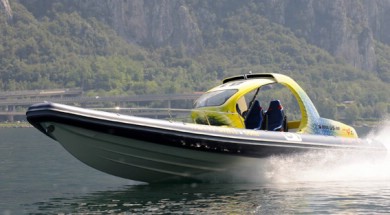

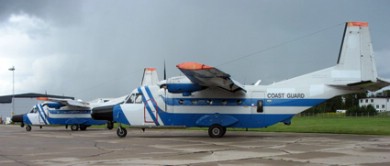

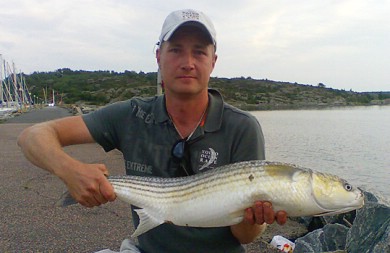
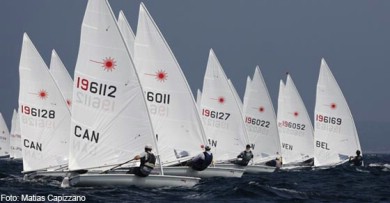
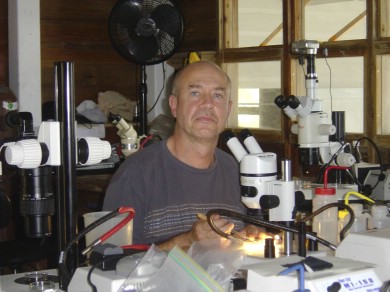


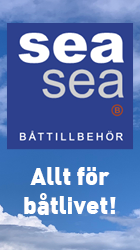
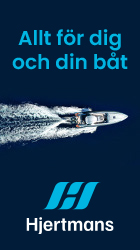
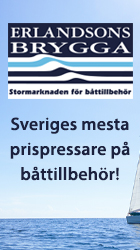

Kommentarer
Och hur har man kommit fram till att det återigen är ok att fiska? "Kvotbyte"? Står inget på fiskeriverket.se. Har man singlat slant?